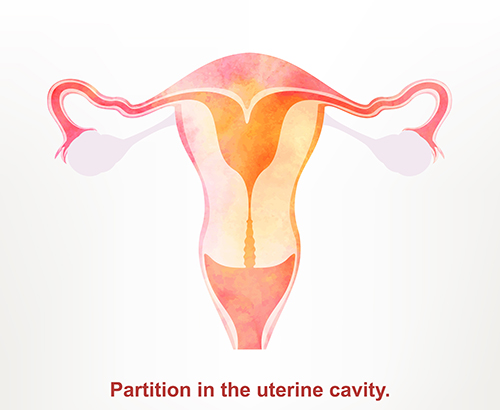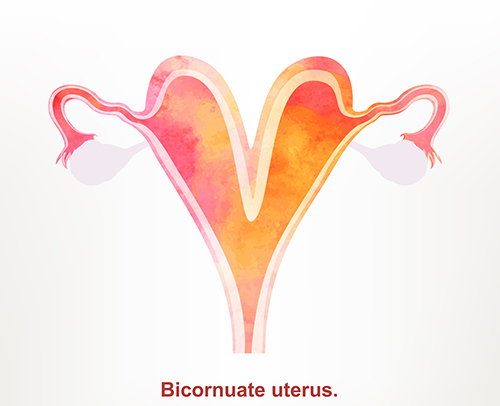A uterine septum is a partition (or septum) that runs through the middle of the uterine cavity and is one form of “double uterus”.
What are the different forms of double uterus?
The two main forms of double uterus are called septate uterus and bicornuate uterus. It is very important to make the distinction between the two types of double uteri because only the uterine septum can be corrected relatively simply using hysteroscopy. The shape of the outer surface of the uterus is the discriminating feature that distinguishes between the two – with a septate uterus, the outer contour of the womb is smooth whereas with a bicornuate uterus, it is markedly indented. A third form of double uterus is the didelphys uterus, but in this case there is also a duplication of the neck of the womb (or cervix).


Are there different types of septate uterus?
Septae can be of various lengths. They can be limited to the upper half of the uterine cavity (partial septae), can extend through most of the cavity of the womb (complete septae) and can even extend all the way through the neck of the womb and into the vagina.
Does the uterine septum affect pregnancy outcome?
Septae have been strongly linked with an increased risk of adverse pregnancy outcome. One of the most common problems associated with septae is miscarriage. It is thought that this occurs when the embryo attempts to implant on the septum; because the septum does not have a good blood supply, this then compromises the supply of blood to the embryo causing it to miscarry. Other problems associated with the septum are fetal malpresentations during late pregnancy (e.g. breech presentation) and fetal growth restriction.
How can I get help to treat a uterine septum?
The uterine septum can be resected by highly trained specialists using hysteroscopy. During this operation, either electricity delivered by a fine probe or a fine pair of operating scissors, is used to divide the septum. The resected septal edges then retract into the muscle of the womb thereby allowing the cavity to regain an almost normal volume and shape. This operation can be performed as a day-case but requires specialised equipment.
Prof Homer is one of the few sub-specialists in Queensland with expertise and experience in managing uterine septae. He is an expert in surgery for uterine septae and wrote one of the world’s leading papers on diagnosing and treating uterine septae.
